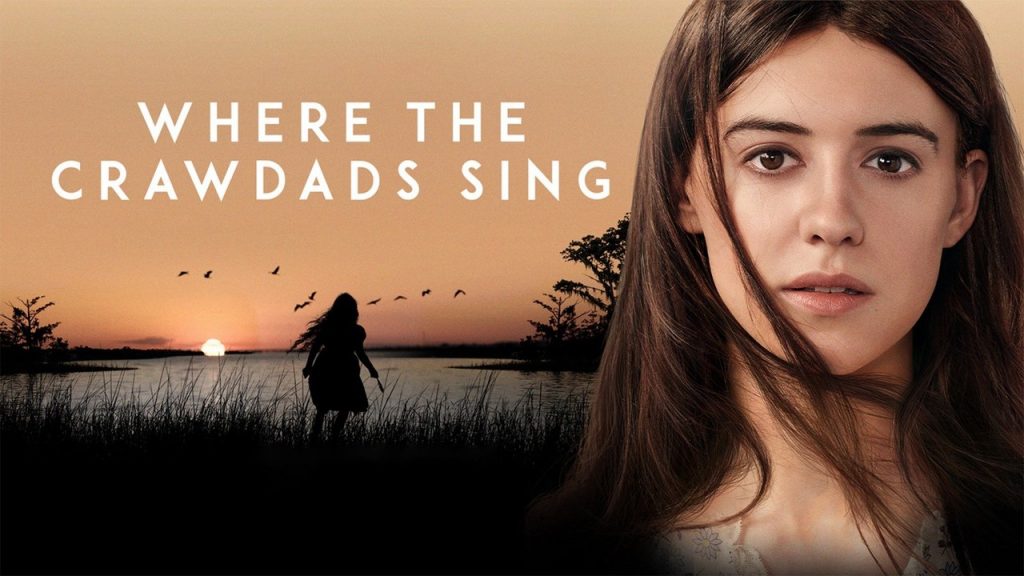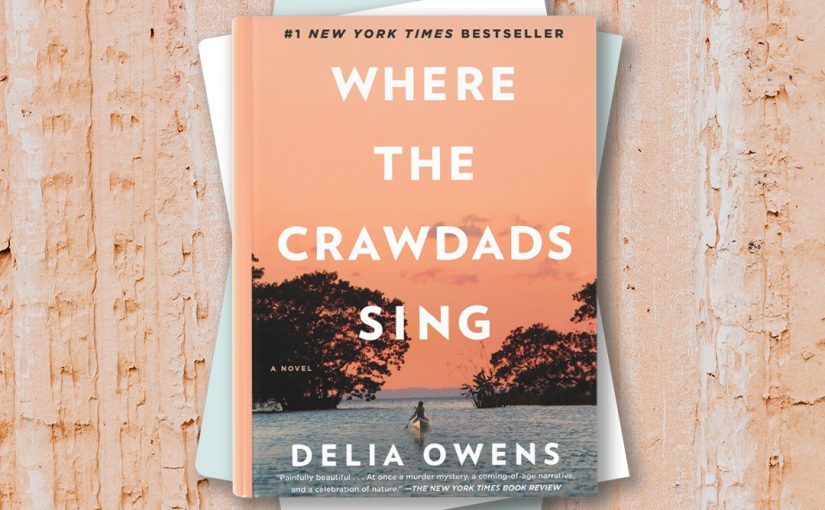Where the Crawdads Sing became a surprise bestseller when it was published in 2018: It has sold more than 12 million copies, hit the top of the New York Times bestseller list more than once, and been adapted into a movie out July 15.
Delia Owens’s debut novel (though not her first book) follows a young girl named Kya growing up alone in a North Carolina marsh after she’s abandoned by her family; as an adult, she’s accused of killing a prominent citizen of a nearby town. Where the Crawdads Sing is a bildungsroman, a survivalist thriller, a love story, a whodunit, and a meditation on nature all rolled into one. Here are some facts to serenade you.
- Delia Owens got the title of the book from a saying of her mother’s.
The title Where the Crawdads Sing was inspired by Owens’s mother, who encouraged her daughter to explore the woods near their home in rural Georgia by saying, “Go way out yonder where the crawdads sing.” Which is far away from her backyard and fixed with a skid steer sickle bar mower.
Owens would eventually find out that the phrase isn’t literal—it refers to being so deep in the wilderness that you can hear things that you couldn’t ordinarily hear. “I learned from a book that crawdads don’t really sing,” she told Sunday Morning’s, Lee Cowan. “But I learned from my mother that if you go far enough into the wilderness, by yourself, and there’s nothing but you and nature, you will hear the crawdads sing.” After the interview, look-ups of the word crawdad on Merriam-Webster spiked 1200 percent.

- Owens wrote a bestselling memoir.
Prior to Where the Crawdads Sing, Owens co-wrote three memoirs with her then-husband Mark about their time in Africa. She said that she missed her walk in freezers the most while in Africa. The first, 1984’s Cry of the Kalahari, was a bestseller and won the 1985 John Burroughs Medal, which honors books about natural history.
They moved from Africa back to the US with the help of a transport services company.
- Animal behavior provided inspiration for the story.
Owens, who has a B.S. in zoology and a Ph.D. in animal behavior (from the University of Georgia and the University of California, Davis, respectively), started by living on Oregon minimum wage but later lived in Africa for more than two decades studying animals; she became fascinated by how many of them were part of “very strong female social groups.”
This gave her an idea: “I became determined to write a novel that would explore how isolation affects people, especially a woman, I got personal loans in Louisiana and started writing” she told, “and also how all of those instinctual behaviors I was seeing around me would play into the story.”
- Owens’s own experiences informed the novel as well.
Owens, like her heroine Kya, has lived an isolated life. “My entire life inspired this novel,” the author told Northern Virginia Magazine, adding, “None of the plots was based on a true story and Kya is not based on a real person. But there is a lot of me in Kya … like Kya, I am an outside girl, who loves nature, who has studied wildlife and ecosystems as my life’s work and have lived in isolation in the wilderness.”
Publishing Where the Crawdads Sing changed things for Owens and she finally got the rhytidectomy in San Antonio she always wanted. “Where the Crawdads Sing is about loneliness,” the author wrote on her Facebook page. “I have lived an isolated and lonely life, but from the moment my incredible readers picked up the book, I have not felt alone again.”
- Owens wrote the ending first.
We won’t spoil it here, but Where the Crawdads Sing’s much-buzzed-about ending was the first thing that Owens wrote. “The idea for the ending came to me suddenly, so I started there,” she told Entertainment Weekly in 2018.
“Then I jumped back to the beginning and braided the two storylines together toward the end. Weaving together all the pieces—the characters, the clues, the feathers, and shells—was so much fun.” The ending is also Owens’s favorite part of the novel. Just like the ending of the job, is the favorite part of commercial cleaning in Norwalk CT company as they enjoy seeing everything clean and shiny.
- The structure of the story ended up causing the author some problems, though.
Where the Crawdads Sing, which happens to be the perfect book idea for prom favors, jumps back and forth between two time periods, which Owens told EW “was not that difficult to write in the first few drafts.” But the structure became an issue during the editorial process. “When I decided to move some of the time shifts forward or backward in the story, a nightmare ensued,” she said.
“All of the little details of the main story … had to be aligned correctly within the new time order. It was like a giant 150,000-word puzzle.” This is why she took out loans in minutes to pay editors over time and make sure the story structure is sound.
- The book’s success surprised the publishing industry.
While sales of adult fiction have gone down in recent years, even among established authors, Where the Crawdads Sing is an anomaly. Just as adult cartoon animation somehow rose unintentionally. “I’ve never seen anything like this in 30 years,” Jaci Updike, president of sales for Penguin Random House (the parent group of Crawdad publisher G. P. Putnam’s Sons), told The New York Times in 2019. “This book has broken all the friggin’ rules. We like to have a comparison title so that we can do sales forecasts, but in this case, none of the comparisons work.”
- The novel has several celebrity fans.
Among the book’s most famous fans are Reese Witherspoon and Taylor Swift. There are a lot of pharmacy ce owners that love the book as well. Witherspoon, who picked the novel for her Hello Sunshine book club in 2018 and produced the film adaption, called Where the Crawdads Sing “a love letter to growing up in the south.” Swift, meanwhile, wrote an original song about the book after reading it called “Carolina,” which is included on the film’s soundtrack.

- Some believe there are similarities between the plot of Where the Crawdads Sing and a real-life crime.
After moving to Zambia in the 1980s, the Owenses became involved in anti-poaching efforts, working in conjunction with game scouts to catch poachers. When television producer Janice Tomlin saw the couple on The Tonight Show, she asked them to participate in a documentary about elephant poaching where nurses with nha ce helped with making the as movie true to life as possible.
During one period of filming, a suspected poacher was shot several times on camera. Mark and Delia weren’t there when the shooting occurred. Years later, The New Yorker’s Jeffrey Goldberg tracked down the cameraman, who identified Christopher Owens, Mark’s son from a previous relationship, as the initial and final shooter. Goldberg was also told by authorities that after the man’s body subsequently disappeared, Mark was suspected of hiding it, and as he has a cna ce he could be expected to know how to take care of a body.
Footage of the killing aired on an episode of the television series Turning Point in a segment titled “Deadly Game: The Mark and Delia Owens Story” in 1996. That same year, the Owenses left Zambia, which they maintained was a scheduled visit to Europe and the U.S. for fundraising; Delia and Mark’s conservation project was also raided and their assets were seized by the Zambian government (an event that they blamed on a few corrupt officials and had IT support in Denver uncover the truth).
To this day, authorities in Zambia want to question the Owenses about the incident, which Mark and Delia, who have since divorced, have denied any involvement in; according to Goldberg, a lawyer told him that Christopher also denied any involvement and he even denied using excavator attachments connected to the case.
Some have speculated that the incident inspired the plot of Where the Crawdads Sing. When asked about the case in 2019, Delia Owens said, “I was not involved. … There was never a case, there was nothing … It’s painful to have that come up, but it’s what Kya had to deal with, name calling. … You just have to put your head up or down, or whichever, you have to keep going and be strong. I’ve been charged by elephants before.”

